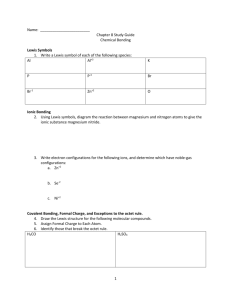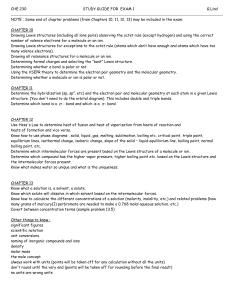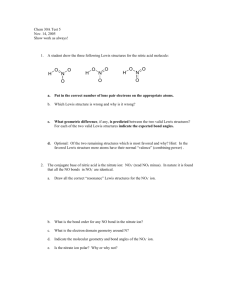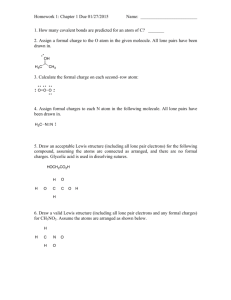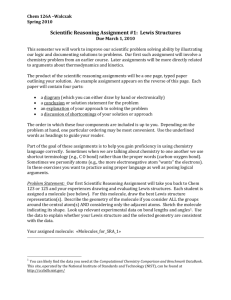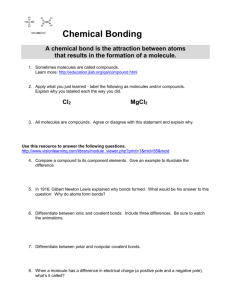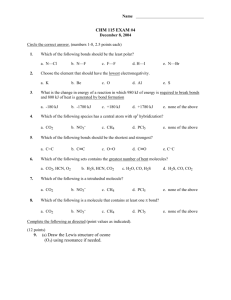Unit 9 Practice FRQ The molecule 2
advertisement
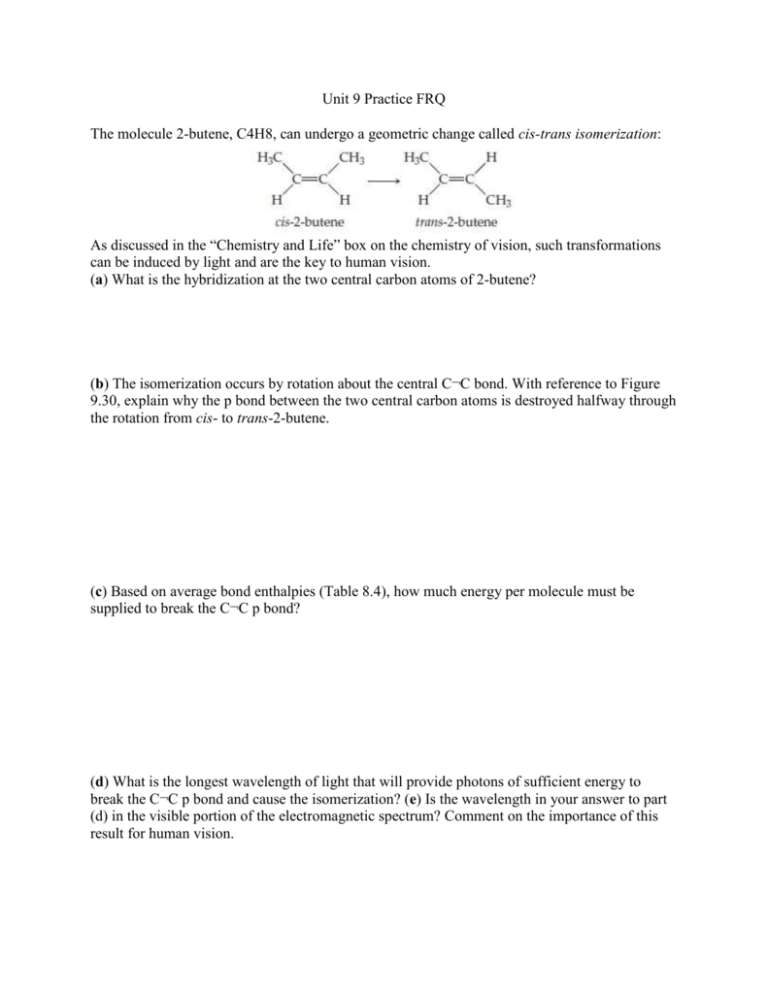
Unit 9 Practice FRQ The molecule 2-butene, C4H8, can undergo a geometric change called cis-trans isomerization: As discussed in the “Chemistry and Life” box on the chemistry of vision, such transformations can be induced by light and are the key to human vision. (a) What is the hybridization at the two central carbon atoms of 2-butene? (b) The isomerization occurs by rotation about the central C¬C bond. With reference to Figure 9.30, explain why the p bond between the two central carbon atoms is destroyed halfway through the rotation from cis- to trans-2-butene. (c) Based on average bond enthalpies (Table 8.4), how much energy per molecule must be supplied to break the C¬C p bond? (d) What is the longest wavelength of light that will provide photons of sufficient energy to break the C¬C p bond and cause the isomerization? (e) Is the wavelength in your answer to part (d) in the visible portion of the electromagnetic spectrum? Comment on the importance of this result for human vision. Write the electron configuration for the first excited state for N2; that is, the state with the highest-energy electron moved to the next available energy level. (a) Is the nitrogen in its first excited state diamagnetic or paramagnetic? (b) Is the N¬N bond strength in the first excited state stronger or weaker compared to that in the ground state? The structure of borazine, B3N3H6, is a six-membered ring of alternating B and N atoms. There is one H atom bonded to each B and to each N atom. The molecule is planar. (a) Write a Lewis structure for borazine in which the formal charges on every atom is zero. (b) Write a Lewis structure for borazine in which the octet rule is satisfied for every atom. (c) What are the formal charges on the atoms in the Lewis structure from part (b)? Given the electronegativities of B and N, do the formal charges seem favorable or unfavorable? (d) Do either of the Lewis structures in parts (a) and (b) have multiple resonance structures? (e) What are the hybridizations at the B and N atoms in the Lewis structures from parts (a) and (b)? Would you expect the molecule to be planar for both Lewis structures? (f) The six B¬N bonds in the borazine molecule are all identical in length at 1.44 Å. Typical values for the bond lengths of B¬N single and double bonds are 1.51 Å and 1.31 Å, respectively. Does the value of the B¬N bond length seem to favor one Lewis structure over the other? (g) How many electrons are in the p system of borazine?
